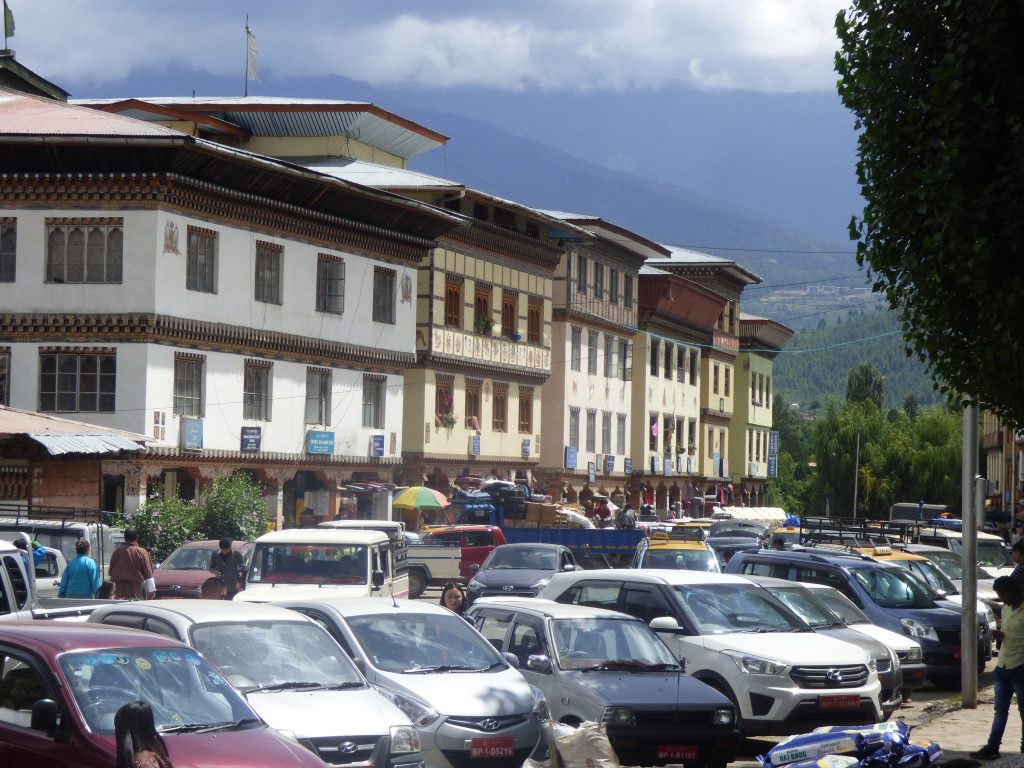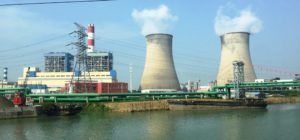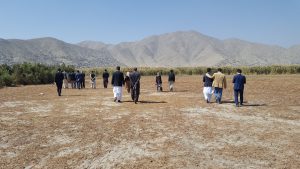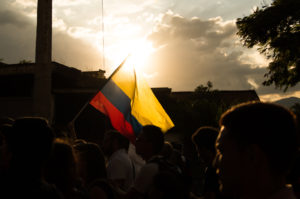The tiny Himalayan kingdom of Bhutan remained in isolation for centuries until 1961, when a road was completed connecting the country with its closest ally, India. Thanks to Bhutan’s strict conservation and slow and careful developmental process, the nation of just over 700,000 people has so far avoided many environmental hazards. But as Bhutan opens up its borders, the number of vehicles, and the levels of pollution, are increasing.
The impact of having more and more cars is visible in the road congestion and environmental destruction caused by the construction of more roads each year. The country has almost 90,000 vehicles, according to the latest Road Safety Transport Authority record, and it is estimated that 21 vehicles are bought every day.
The increasing number of vehicles in Bhutan makes an immense impact on air quality. There has been a constant increase in the concentration of atmospheric particulate matter (PM10) in Thimphu – the country’s capital – since 2004, according to the National Environment Commission’s 2016 State of the Environment report. Besides tailpipe emissions, others include particulate matter from tyre and brake wear-out and re-suspended road dust.
Fiscal measures, including the revision of taxes such as import duty and green tax, have made little impact on reducing the number of vehicles being imported. In fact, the number of vehicles almost doubled from 40,532 in 2008 to 76,118 in 2015, contributing to an increase in greenhouse gas emissions.
Increasing numbers of vehicles demands constant road resurfacing and the extension of roads to connect with rural pockets. Records from the Ministry of Works and Human Resources show that in 2015, there were 10,717 kilometres of roads in Bhutan, of which around 70% were yet to be paved. The burning of bitumen and asphalt for road resurfacing also contributes to air pollution.

In November 2016, the National Council of Bhutan rejected the Bangladesh, Bhutan, India and Nepal (BBIN) motor vehicle agreement, due to fear of pollution and environmental destruction. The agreement would have set in motion steps for passenger vehicles and, perhaps more critically, freight vehicles to cross swiftly and easily from one country to another.
Read more: Bhutan’s Parliament rejects regional motor vehicle pact
While Bhutan is yet to resolve the fate of the agreement, another concern is rising around the application of India’s goods and service tax (GST). The tax is designed to boost exports from and limit imports to India, while stimulating its domestic industries. The GST would mean no taxes be levied on exports from India.
India tops the list of countries from which Bhutan imports. In 2016, Bhutan imported vehicles worth USD 88.55 million from India. With the application of the GST in India, Bhutan’s import of vehicles from the country is likely to rise, as the price for cars falls.
Many middle-income residents in Thimphu welcomed the news. “I am in desperate need of a small, affordable car,” says Kuenzang Dorji, but he worries about parking space. He resides in the Olakha area of Thimphu, which is already overcrowded, polluted and subject to increasing constructions to repair poorly-designed and damaged roads.
Lack of public transport
A lack of public transport and high taxi fares have compelled many middle-income people to buy their own car. “If I own a car, I could last a week on 500 ngultrum [USD 7.7] of fuel, which could help me get my kids to school and back, drive to my office and into town,” says Dorji. Without a personal vehicle, his family has to pay at least 1,500-2,000 ngultrum [USD 23-30] on transport charges each week.
In 2015, Bhutan was home to 76,118 vehicles, out of which 64% were light vehicles and mostly privately owned, according to the Road Safety and Transport Authority (RSTA) 2016 report. Taxis accounted for only 5% of all vehicles while heavy and medium vehicles, such as public transport buses and freights lorries, accounted for only 13%. This number excludes vehicles owned by armed forces, diplomatic missions and foreign construction companies.
To curb the increasing vehicle imports into the country, the Bhutanese government has been making efforts to improve the public transport system, buying 18 new buses for Thimphu city and boosting the city fleet to 48 vehicles.
Connecting districts with others, the public bus service has made transportation easy and affordable for many people in Thimphu, but it still has a long way to go, considering the scattered population of Bhutan.
Measures to tighten import
The government of the first democratically elected Prime Minister, Jigme Y. Thinley, banned the import of vehicles since 2012, which paused the growth of vehicle numbers. The ban was officially lifted by the new government a few months after the second parliamentary election on July 19, 2014.
In the first week of August this year, the Royal Monetary Authority (RMA) tightened access to credit for buying vehicles amid increasing vehicle imports and GST applications in India. The RMA issued a notice to financial institutions asking them to provide only 30% of the vehicle cost as a loan, and not the previous 50%. Dasho Penjore, the RMA Governor, told media in Thimphu that the application of the GST in India would exempt duties on the import of cars to Bhutan, reducing the cost of India-made cars by up to 20%. Considering the likely impacts of the GST, the change in loan conditions might also have an impact on Bhutan’s reserves of the Indian rupee, said Penjore.
Financial institutions in Bhutan have provided more than 4.8 billion ngultrum [USD 74 million] of the total 94 billion ngultrum [USD 1.4 billion] loan granted as transport loans in the domestic market, according to RMA records. In 2015, the government reportedly lost 676 million ngultrum [USD 10 million] from tax exemptions on vehicle imports for the government, corporate bodies, projects, and the tourism sector and by granting a quota to senior civil servants.
This government has already revised the sales tax and customs duty on the import of vehicles after it lifted the ban imposed by the former government in July 2014. But the purchase of vehicles is still on the rise. With a third general election drawing near, some environmentalists are sceptical that the present government might not come up with the necessary fiscal measures in time.
![<p>Vehicles lined up near the newly-completed Giant Buddha stupa in Thimphu, Bhutan [Image: Dawa Gyelmo]</p>](https://dialogue.earth/content/uploads/2017/09/P1050208-e1506600468315.jpg)



![View of Pul Doda from the road above, a half submerged structures of a mosque, a temple and a few houses can be seen [image by: Majod Maqbool]](https://dialogue.earth/content/uploads/2017/10/A-view-of-the-Pul-Doda-area-from-the-road-above.-The-half-submerged-structures-of-a-mosque-a-temple-and-a-few-houses-can-be-seen-here.-300x184.jpg)




